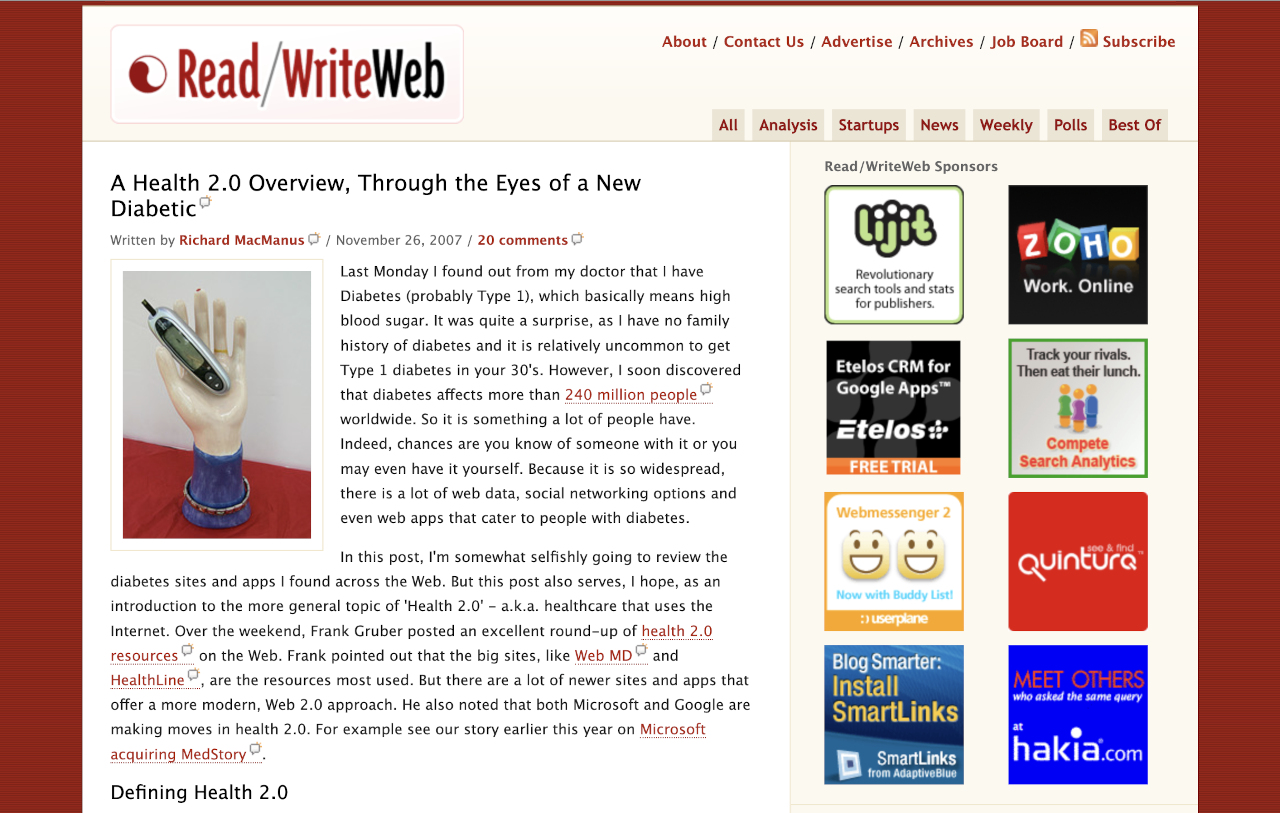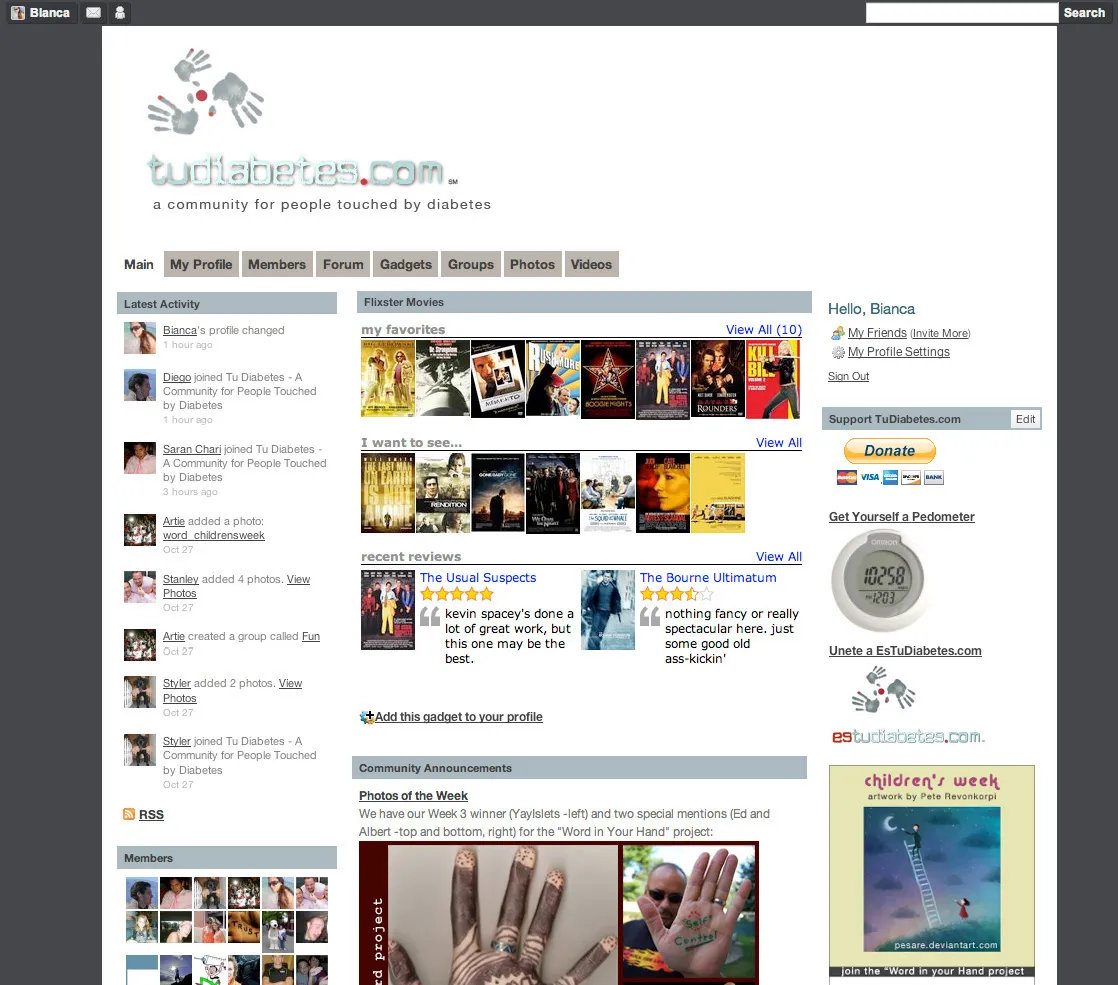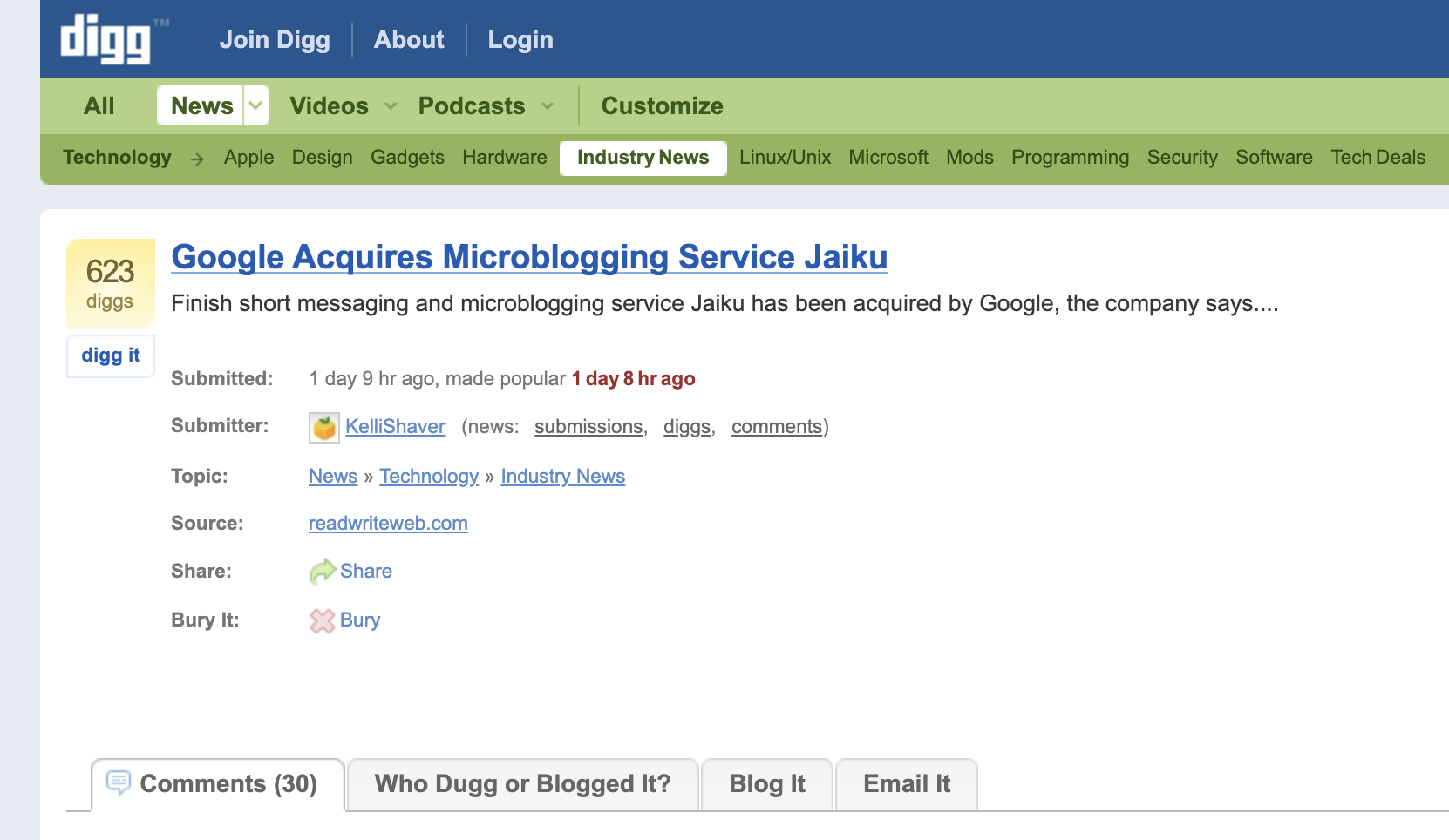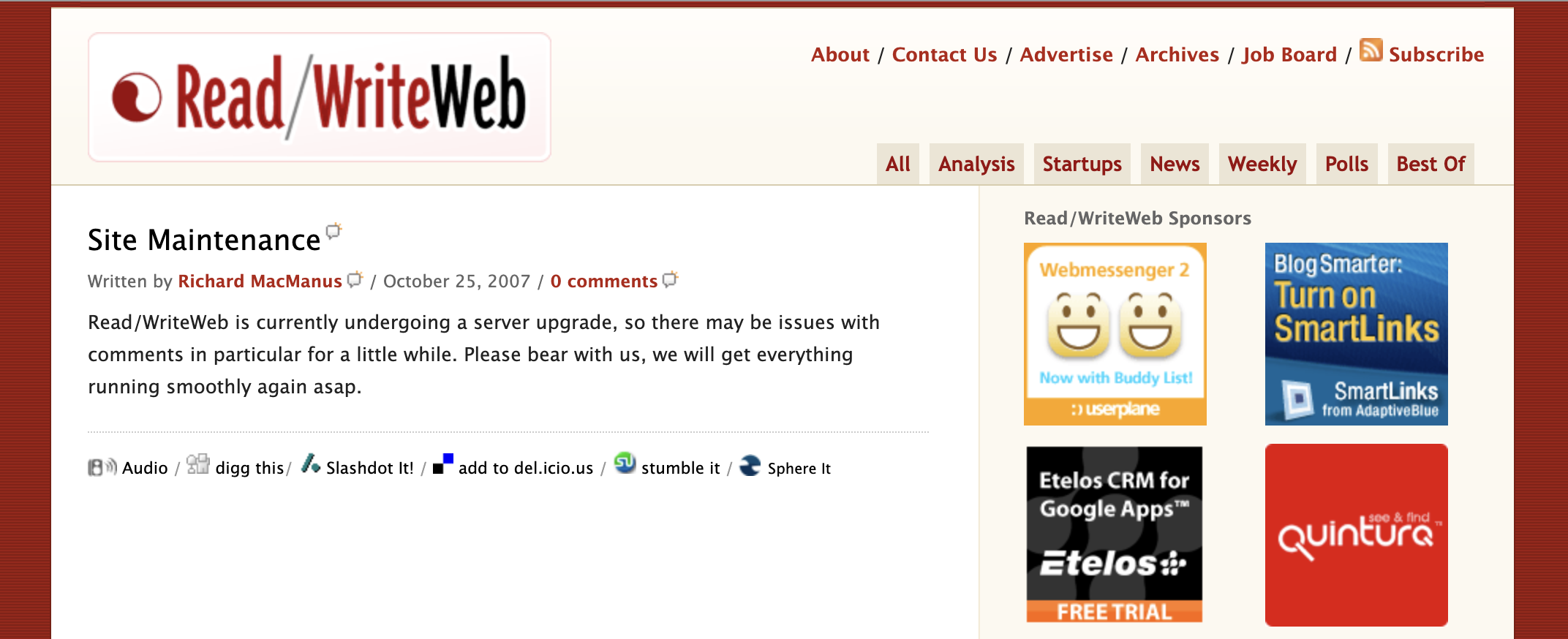025. Stress 2.0: Health Problems & Web Server Issues
by Richard MacManusIn November 2007, I get a shock diagnosis of Type 1 Diabetes. Meanwhile, the Read/WriteWeb server struggles to cope with our rapid page view growth.

The first sign of health problems came before I went to the 2007 Web 2.0 Summit. Late that September, I was traveling by car to Kaikoura, a scenic coastal town near the top of the South Island of New Zealand. My wife and six-year-old daughter were with me; we intended to spend a few nights there and then visit my nana in Blenheim on the way back. But during that car trip I felt unwell and was frequently stopping to urinate. After we arrived in Kaikoura, my wife and I began arguing—partly due to my workload, but due also to my physical discomfort.
We ended up staying just two nights in Kaikoura instead of three. I was feeling both physically and emotionally frazzled, and my wife insisted I go and see my doctor when we got back. I put it off for a week or so but finally relented and saw him on Wednesday, October 10, just a few days before my scheduled US trip. He referred me for some blood tests, which I put off. I got on the plane to San Francisco instead—frankly relieved to be getting away from the stresses of home life.

The road to Kaikoura is scenic, but I was too stressed out to enjoy it that Spring of 2007. Photo by Robert Thomson in Nov 2008.
When I got back from America about a week later, I put the blood tests to the back of my mind. I had a lot to catch up on with RWW, I told myself. But there were signs that I wasn’t 100 percent—I felt very thirsty all the time, I was losing weight and having mood swings, and I generally felt tired and run-down. I put all this down to overwork and the continuing problems in my marriage. My way of coping was to knuckle down with RWW work.
Then Nana died, at age eighty-eight. The last time I’d seen her was at the end of September, on the holiday we’d cut short. Again, my family and I hopped on the Cook Strait ferry from the bottom of the North Island to the top of the South. Her funeral was in the second week of November.
On the ferry ride back home, I was extremely seasick. It was a rough journey, with large sea swells, but I had never felt as bad as that before. My body was telling me something, and this time I listened. I did the blood draw as soon as I got back. Then, finally, I went to see my doctor on Monday, November 19.
“I’m sorry to say this, old boy,” my doctor told me that day, “but you have diabetes.”

I don’t have fond memories of Cook Strait ferries, despite this picturesque photo by Azzaroni from Sep 2007.
It took me a couple of weeks to understand that I’d gotten type 1 diabetes, an autoimmune disease where your body no longer produces insulin. Type 2 is far more common; it’s when the body still produces insulin but doesn’t process it correctly (it’s typically associated with overweight people). What really shook me was finding out that type 1 is incurable, whereas you can recover from type 2. So I would have to inject insulin into my body every day of my life, from now on.
Not knowing how else to cope with this news, on November 26, 2007, I wrote a blog post about it. In my research I discovered many online resources for diabetics, including blogs and social networks. My best discovery was a niche social network called Tu Diabetes, which had been created using Ning. Its founder, Manny Hernandez, had only just launched the site in March. He left a comment on my blog post: “It can be daunting at first, that is why TuDiabetes exists in part: to help you deal with it without feeling alone.”
I realized that Manny was right: through the web, I wouldn’t have to go through this huge life change alone. It was some comfort to hear that, especially since I felt like I was dealing with other challenges in my life alone—the rapid growth of RWW and my topsy-turvy marriage chief among them. Part of my problem was that I was a poor communicator when it came to my personal life. I buried my work and home stresses deep inside so that my family and friends couldn’t easily see that I was struggling.
I still had to meet the daily challenge of diabetes by myself, of course, but online I could ask questions on social networks and read about the experiences of other T1s. It was perhaps the first time I’d seen the true social power of the web in action.

The TuDiabetes website was built on Ning, which then connected to Google’s OpenSocial effort. Image via TechCrunch.
A lot was happening in social networking in this period. Facebook was growing fast after its platform announcement in May, which seemed to prompt every other tech company—big and small—to jump aboard the social network hype train. A startup called FriendFeed launched in October and quickly gained a cult following among geeks like me—it was basically an aggregator of RSS and social media feeds. The same month, Google launched OpenSocial, a set of APIs that allowed developers to build an application once and install it across a variety of social networks.
OpenSocial was clearly aimed at kneecapping Facebook’s proprietary developer platform. Basically every social network other than Facebook joined Google’s initiative—even MySpace, still the leading social network. Ning also joined, so theoretically this meant a developer could build an app for diabetics that could be used across Ning, MySpace, and Friendster. This idea pleased me, since I’d just discovered the value of the social web in managing a health condition.
Open standards for social networking seemed very promising, especially when Facebook waded into a privacy controversy in November. It had launched a new advertising system called Beacon that allowed its users to share things they do across the web to their Facebook news feeds—for example sharing an eBay listing with their friends. RWW described Beacon as “an attempt at conversational marketing, where users become product promoters.” The problem was, the system also allowed Facebook’s advertising partners to gather user data—sometimes without a user’s knowledge—for targeted advertising.


With its Beacon project, Facebook introduced a controversial new form of advertising. Images via The New York Times.
Beacon wouldn’t be the first time Facebook tested the boundaries of user privacy, but somehow the company still managed to fend off its open standards competition and continue growing. As for Google’s social networking project, well, I never did see an OpenSocial diabetic app get developed. But, fortunately for me, TuDiabetes continued as an independent community that I would visit as needed over the coming years.
It wasn’t just me having health issues near the end of 2007. RWW’s web server was also very sickly, with multiple outages on the site during this time. It was a mix of server-scaling issues and problems with the implementation of Movable Type 4 (MT4), the latest version of our publishing platform. It turned out, we were the first major site to upgrade from MT3.5 to MT4 on Media Temple, our web host. So we had unwittingly become the test bed for all the early bugs that typically reside in a new and complex piece of software.

Screenshot of Movable Type 4.0 by Six Apart, circa June 2007.
The move to MT4 began in mid-August, about a month before the site redesign by Ideacodes started. The plan was for Media Temple to set up a new server for RWW, using MT4, so that Ideacodes could optimize the redesign for the new version of Movable Type. Things were complicated by the fact that Media Temple were moving us from a shared server environment to what they called a “dedicated virtual” server. In other words, this server would be ours exclusively—another sign that RWW had joined the big leagues.
Initial progress on the upgrade was positive, but toward the end of September we began to have problems with our existing live server, which we shared with other websites. We were still on MT3.5 on the live site, so we knew it wasn’t an issue with the publishing platform. It may’ve been a simple scaling issue with RWW, since our page views were growing fast and we were getting regular Digg front pages (each of which brought a burst of traffic). But since it was a shared server, the problem may’ve also been with other sites on the server.
On Monday, October 1, while I was away from the office (having just returned from that fateful trip to Kaikoura and still feeling the first effects of the as-yet-undiagnosed diabetes), Marshall sent an email to our contact at Media Temple. “Wanted to let you know that RWW is taking a long, long time to load and I’m getting reports in some cases that it’s never loading,” he reported.
There was no immediate reply, so after logging in and seeing the latency issues for myself, I phoned Media Temple’s helpline. It took a while, but eventually the issue was fixed. The server problems made me queasy—or perhaps that was my body’s issues with elevated blood-glucose levels. Regardless, I wanted to get on our own dedicated server as soon as possible, and I told Media Temple this.
On Tuesday, October 9, Marshall sent me an exasperated email. “Are we moved to that dedicated server yet? The site was timing out when I woke up this morning, though it was back up in a bit. People keep telling me they love RWW but it’s the worst loading blog they read (Mashable’s pretty damn bad too though). TC [TechCrunch] used to have lots of issues like this but they sure don’t anymore. Hope we can fix.”
I replied to Marshall that I would chase up Media Temple yet again. “On the positive side, 2 digg frontpages today!” I added, knowing full well that this was a double-edged sword.

One of the Digg frontpages we had that day…not sure how many people actually got to read the article, due to our server issues.
An executive from Media Temple replied to my latest despairing email and told me they were working closely with Six Apart to install MT4. He explained that there were still bugs that they were working through. It was slow going because this was Media Temple’s first MT4 installation and so they were testing it extensively.
I began to question whether I’d made the right decision to do the upgrade to MT4. I had wanted the new design to take advantage of the new functionalities it promised, which was a perfectly reasonable business decision. What I hadn’t counted on was the technical complications of being the first Media Temple customer to make this move. Add to that the unforeseen performance issues with the live site during October, and it was adding up to an almighty headache. I wished I had an chief operations employee to palm all this off on, but for now, it was up to me to sort it out with Media Temple and Six Apart—while keeping Ideacodes in the loop.
Shared-server issues continued throughout October, which pushed me to go live earlier than expected on the new dedicated server, running the still-buggy MT4. A site with a few bugs was better than a site that constantly went down, I reasoned, so I reluctantly gave the go-ahead.
The plan was to flick the switch sometime during the coming weekend and during off-hours. But a couple of days later, on a Thursday, we had yet another outage on the live site—and this time we couldn’t even log in to Movable Type! After some frantic discussion with our various tech partners, I approved the domain-name switch to the dedicated server and MT4 that Thursday night.

The “site maintenance” post every web publisher dreads.
“Ok, server upgrade was done,” I reported nearly six hours later to Marshall, Josh, and Alex, adding that it was “very messy and there are a number of issues to fix.” The post and comment publishing were now frustratingly slow, and we were seeing bugs in live that had not been picked up during testing. In addition, our RWW emails weren’t getting through. The upgrade had, to put it mildly, not gone smoothly.
On Friday I got Six Apart involved again, now basically begging them to help. “The bottom line for me, as publisher, is that I have had a broken website (well, comments and entry creation at least, plus some other parts of the website such as Monthly Archives) for the past 24 hours and there’s no sign of a resolution,” I wrote, adjusting my email signature to “Editor & Exasperated Publisher, Read/WriteWeb.”
Finally, after several stressful days, the tech issues were resolved. But it hadn’t done my blood pressure any good—or my blood-glucose issues, for that matter.
This post is part of my serialized book, Bubble Blog: From Outsider to Insider in Silicon Valley’s Web 2.0 Revolution. View table of contents.
Next up: 026. ReadWriteWeb’s Big Redesign & The Inaugural Crunchies
Support Cybercultural
Cybercultural is a free newsletter, but you can also become a premium subscriber for £5 per month or £48 per year. Paid subscribers will receive the occasional bonus post, plus a thank-you mention in the paperbook book version of Bubble Blog.